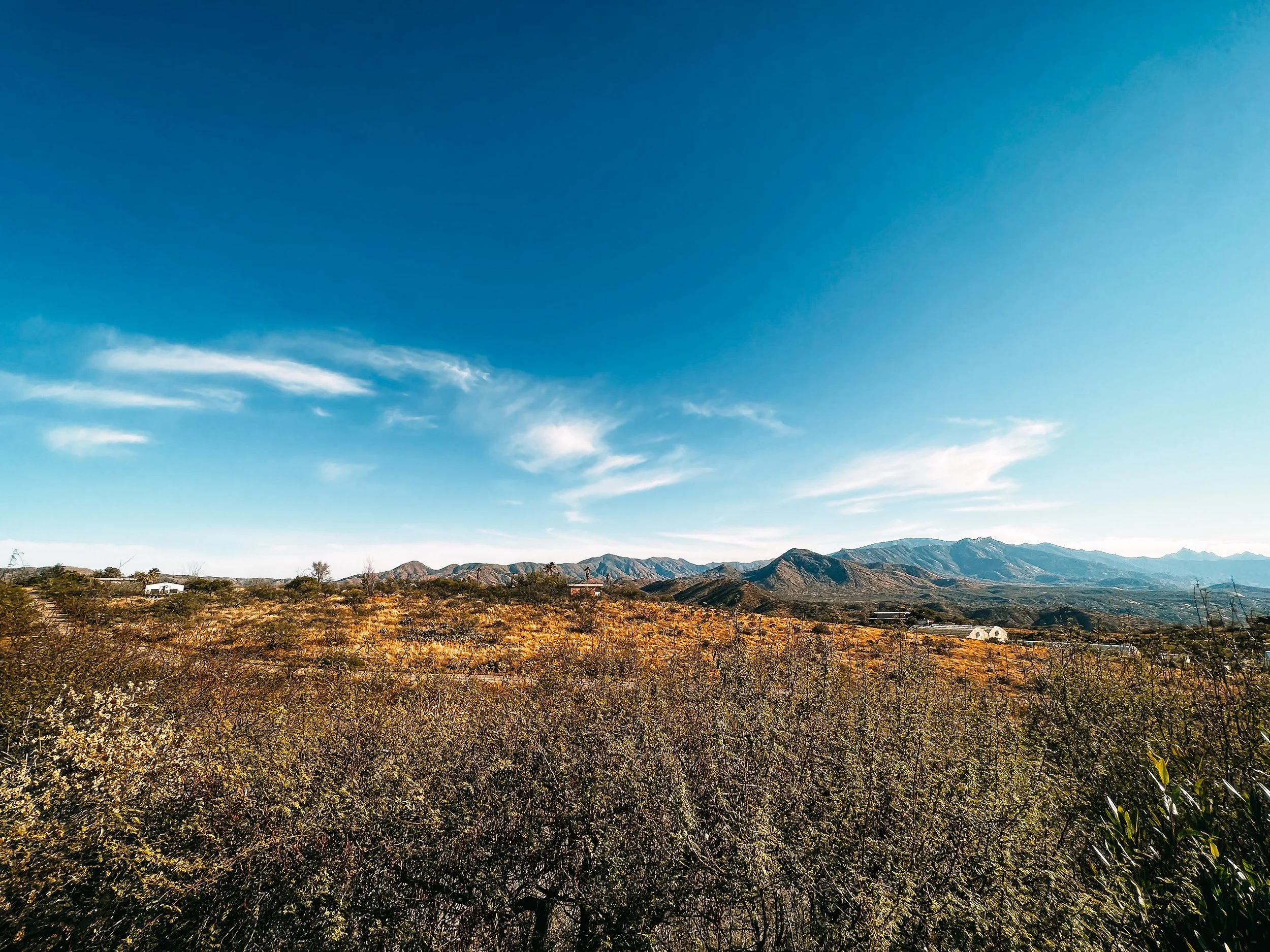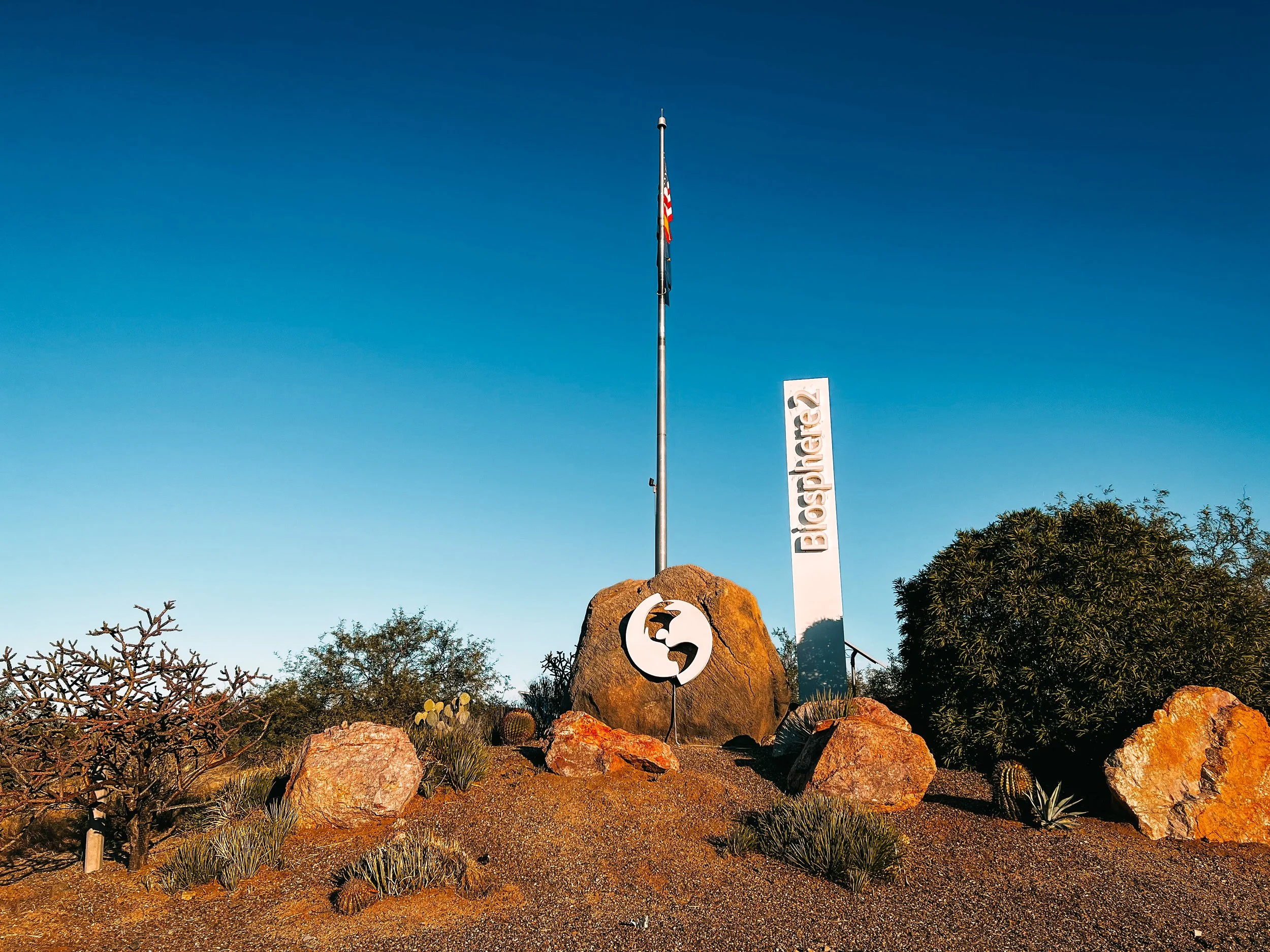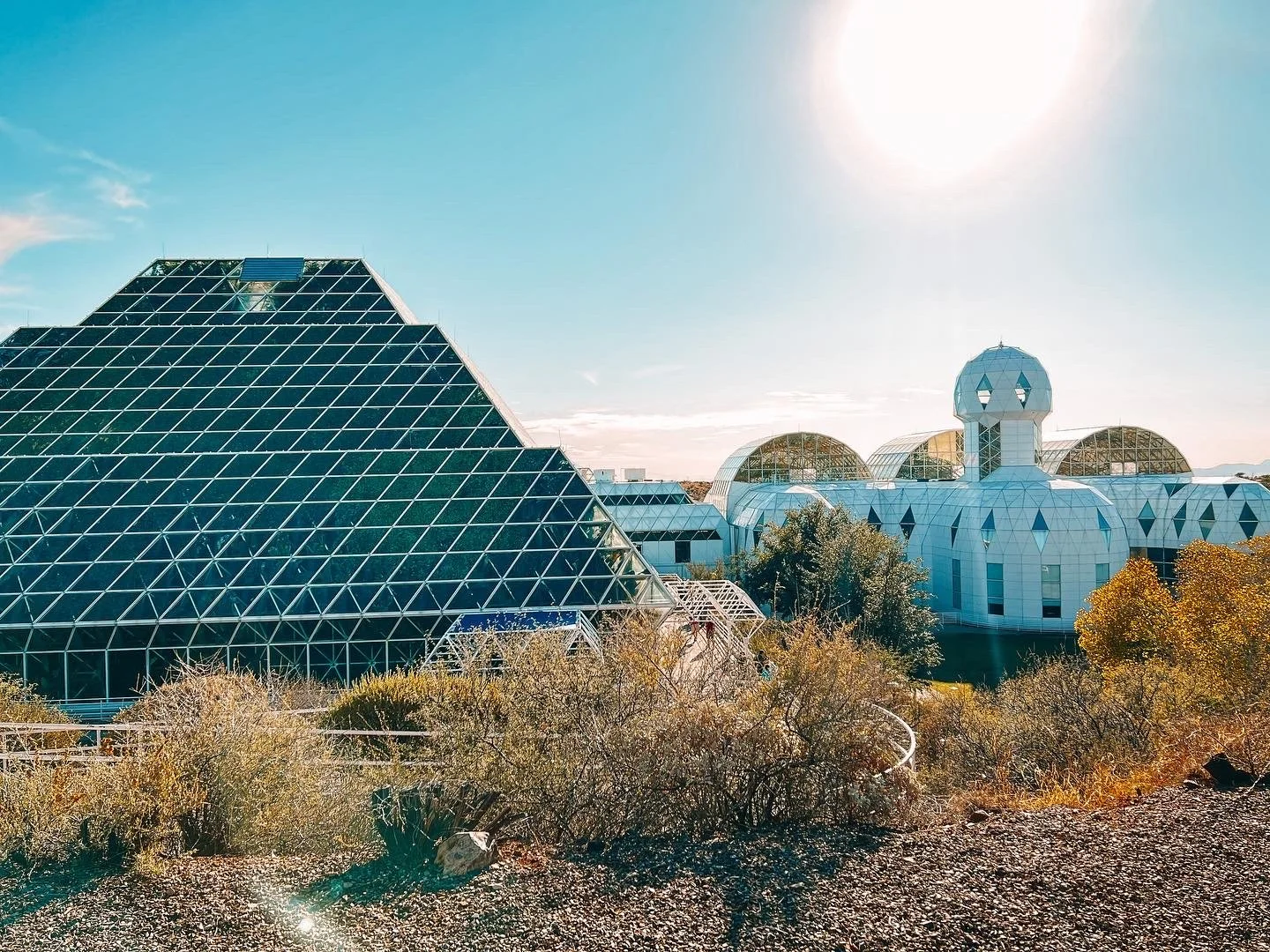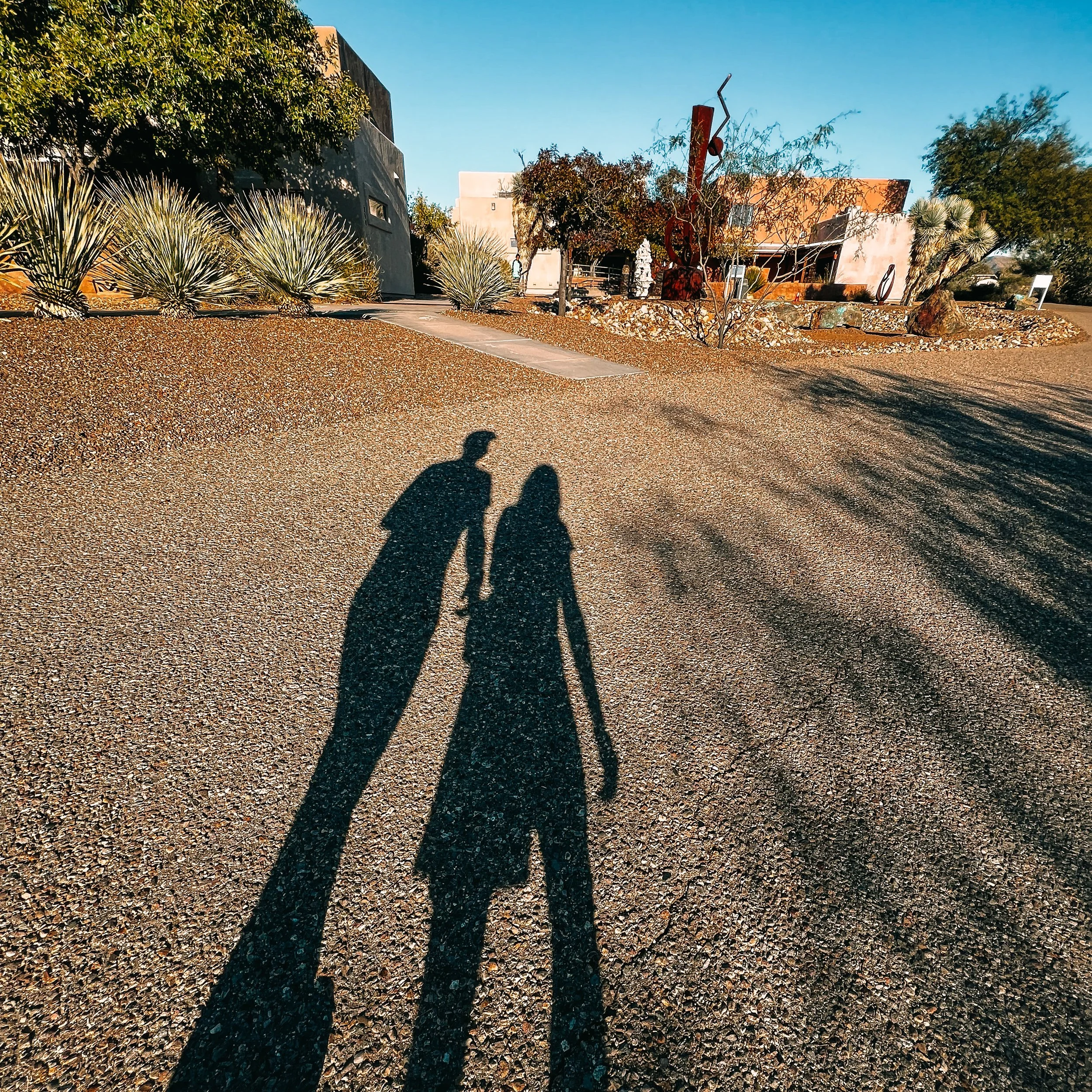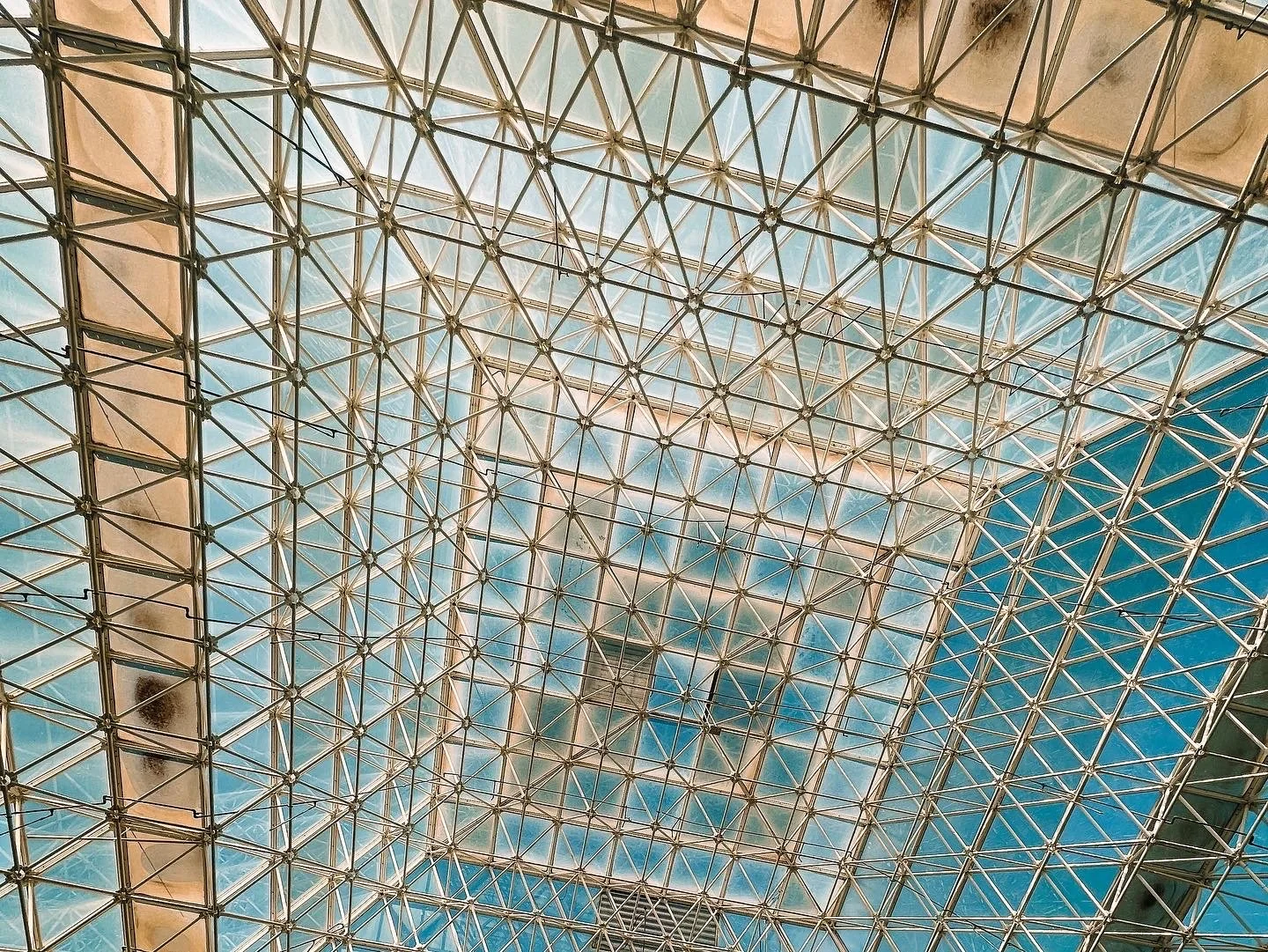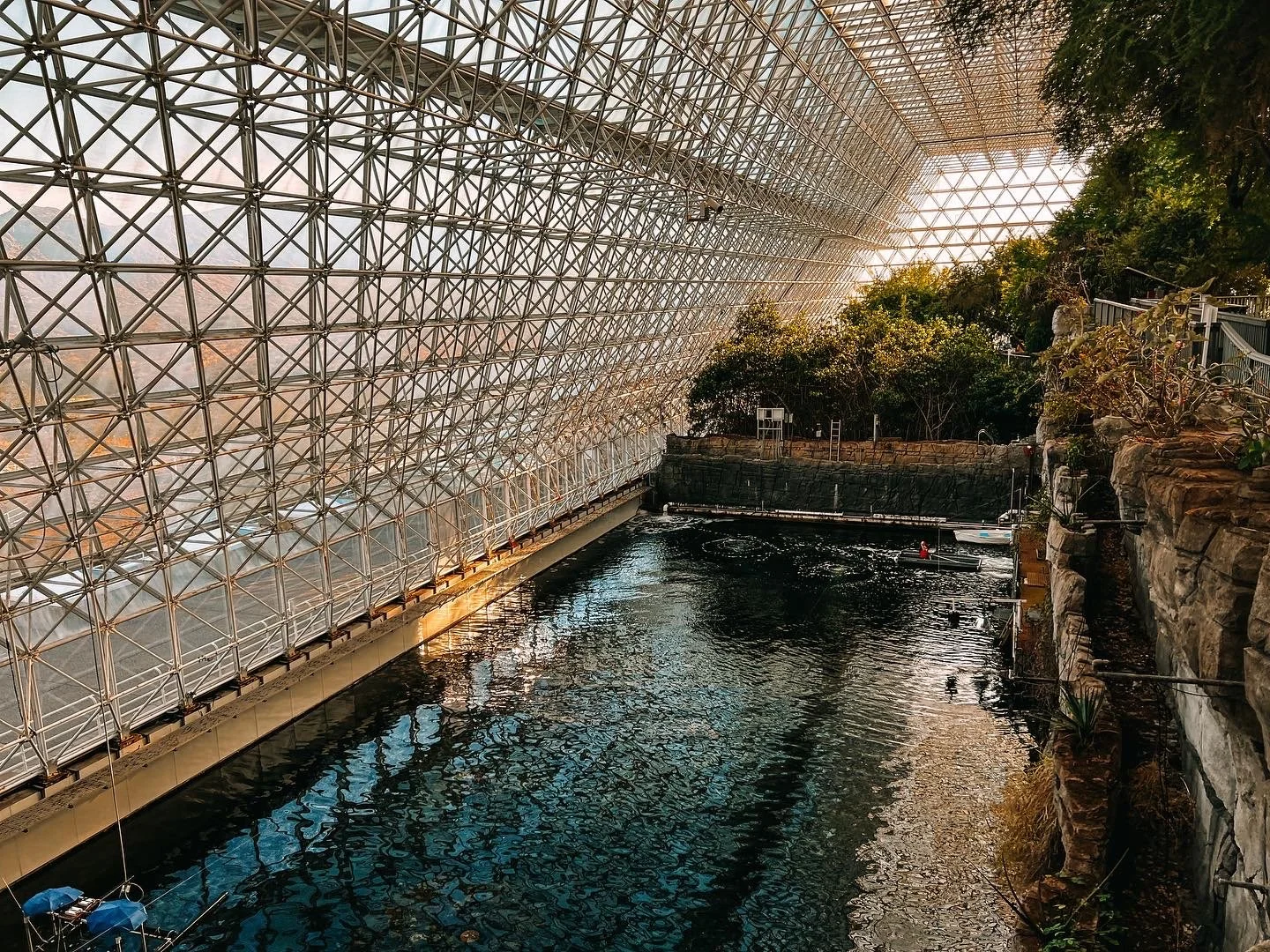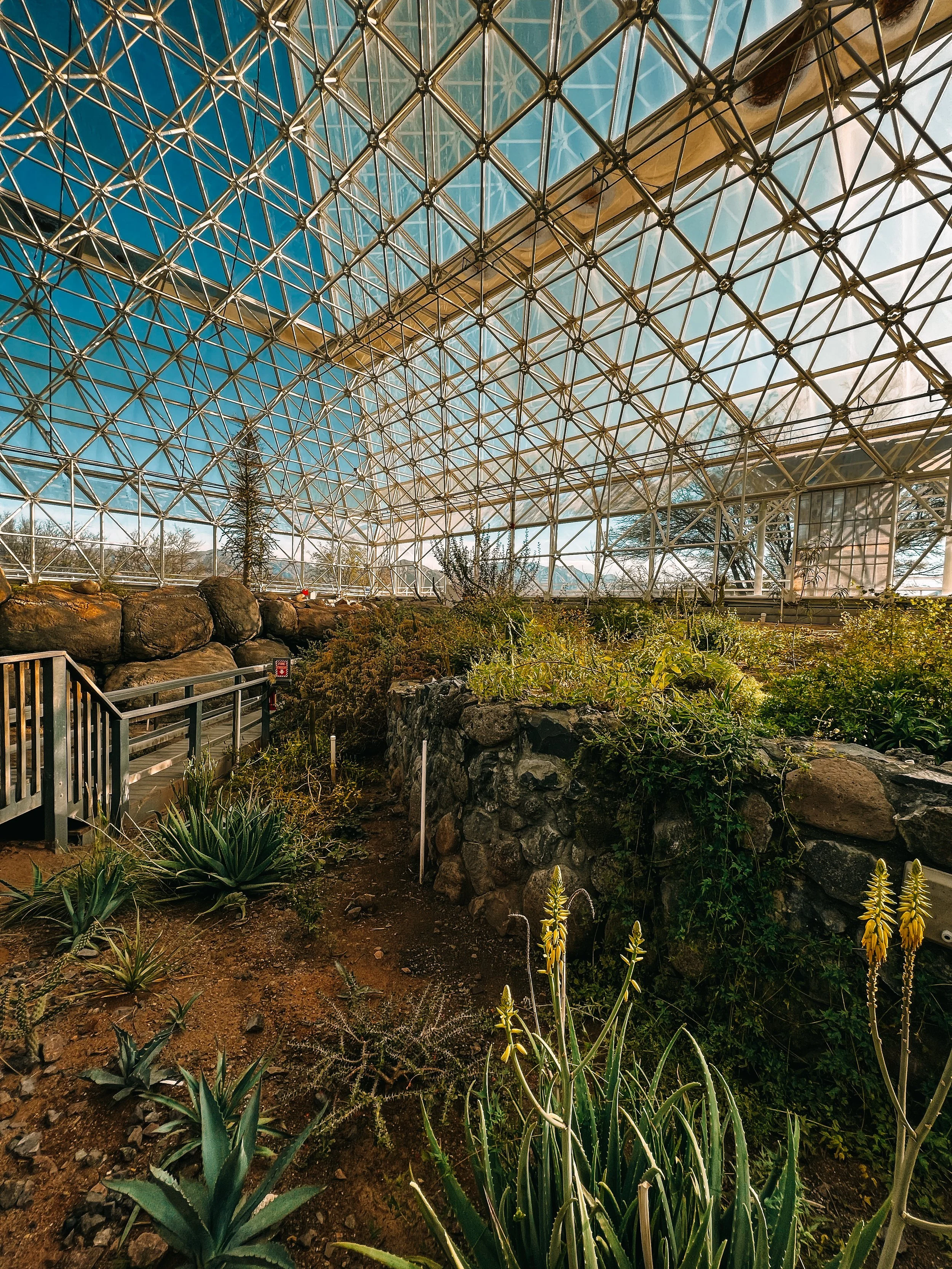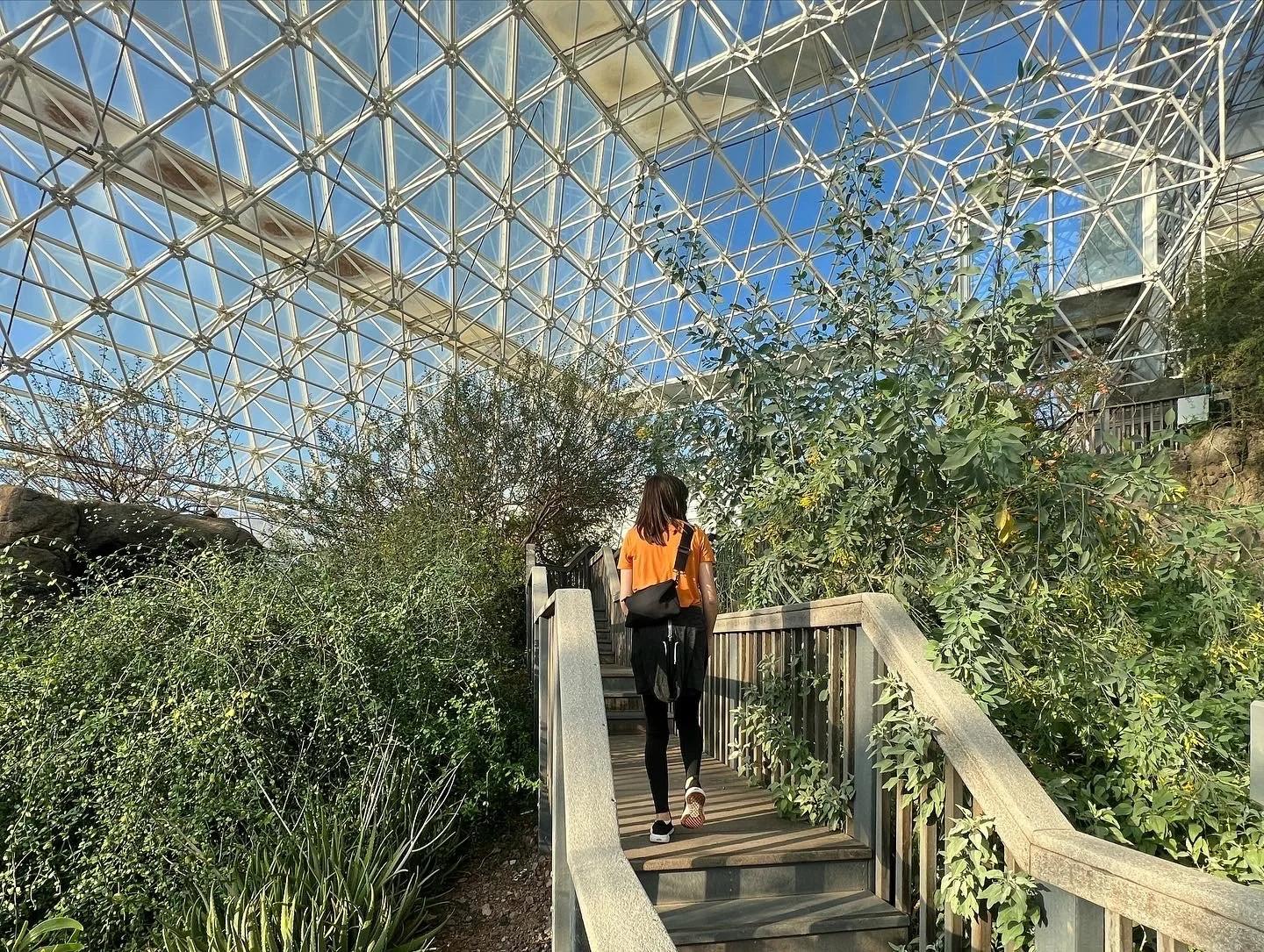Biosphere 2: the Real Life Bio-Dome
Do you remember the 1996 Pauly Shore classic Bio-Dome? It’s a movie about how two moronic best friends get themselves locked inside a “bio-dome", a form of closed ecological system used for science experiment, along with a group of environmental scientists for one year.
Did you know that there is a real life bio-dome in operation in Arizona?
About two hours south of Phoenix, in the middle of the desert, is the most amazing sight—Biosphere 2.
The Mission
The mission of Biosphere 2 is to advance our understanding of the natural and human-made environment through unique research and experimentation, interdisciplinary science training and education, and leadership in initiatives that address the grand challenges to sustaining Earth systems and quality of life. Spoiler Alert: It was full of a lot of drama for YEARS (and even still a little bit today).
The Property
Biosphere 2 is sits on a 40-acre campus with a 3.14 acre research facility at the heart. Biosphere 2 is approximately 7,200,000 cubic feet and sits under under 6,500 windows and sealed glass. It is also sequestered from the earth below by a 500-ton welded stainless steel liner to ensure it is completely cut off from the surrounded ecosystem. It also includes more than 300,000 sq. ft. of administrative offices, classrooms, labs, conference centers, and housing. It was truly meant to be an all encompassing, self-sustaining research campus.
The Biomes
The Biosphere 2–named after Earth, which would be considered Biosphere 1–is the world's largest controlled environment dedicated to understanding the impacts of climate change. Its seven biome areas were a 20,000 sq ft rainforest, an 9,100 sq ft ocean with a coral reef, a 4,800 sq ft mangrove wetlands, a 14,000 sq ft savannah grassland, a 15,000 sq ft fog desert, and two anthropogenic biomes: a 27,000 sq ft agricultural system and a human habitat with living spaces, laboratories and workshops. Below ground was an extensive part of the technical infrastructure. Heating and cooling water circulated through independent piping systems and passive solar input through the glass space frame panels covering most of the facility, and electrical power was supplied into Biosphere 2 from an onsite natural gas energy center.
Visiting Biosphere 2
Other than seeing cool pictures of Biosphere 2 online, we didn’t really know a lot about the space or what to expect. We purchased tickets in advance to ensure we could go on the exact day we wanted (the day we landed in Arizona, after driving directly from Phoenix to Tucson).
Once we arrived, the staff had us download a special Biosphere 2 Experience mobile app which would take us through a self guided tour of the facility. The mobile app includes never before seen photos and videos that visualize the science and 30-year history. Through science stories and interviews you have the opportunity to learn more about our amazing, world-class research as you traverse a (socially distanced) one-way path around various areas of Biosphere 2!
The entire tour took us just over an hour to complete (plus some time at the gift shop, of course).
What to know more about Biosphere 2?
You’re not alone. We didn’t know a lot going into our visit there but since they we have been about the science, the experiments, and ESPECIALLY the drama. Here are some of the podcasts and documentaries we’ve been enjoying since our visit:
Space Ship Earth (streaming on Hulu)
The Lost History of One of the World’s Strangest Science Experiments (The New York Times)
The Aftermath: Biosphere 2 (The Alarmist podcast)
Biosphere 2: The Theater of Utopia (Nice Try! by Curbed podcast)

